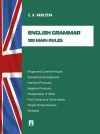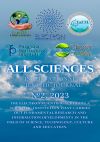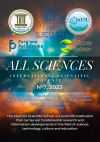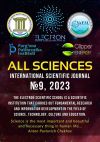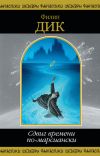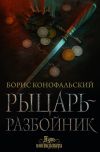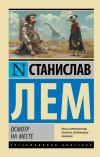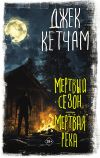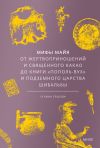Текст книги "Ксандопуло Георгий. Өнегелі өмір. В. 37"
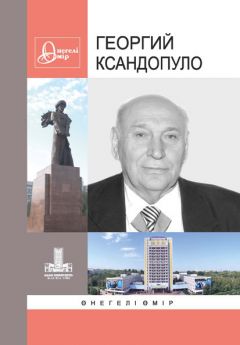
Автор книги: Коллектив авторов
Жанр: Зарубежная образовательная литература, Наука и Образование
сообщить о неприемлемом содержимом
Текущая страница: 6 (всего у книги 21 страниц) [доступный отрывок для чтения: 7 страниц]
Ниже в идеализированном виде рассмотрены некоторые направления, по которым уже ведутся [9-10] или представляются возможными исследования, где, к примеру, в качестве атакующего реагента, – частицы вольфрама, как одного из протяженного ряда примеров атакующих частиц, обладающих благоприятно высокой плотностью. Спектр частиц в кластере вольфрама представляется достаточно узким, т.к. рост Fн начиная с Rх = Rк сокращает число актов коалесценции. Как указано выше авторы [4] полагают, что размер кластера М* в момент рождения составляет 10-6 м.
Присутствие более крупных частиц в потоке обусловлено лишь в старте СВС-процесса, когда из-за малых Fн возможна заметная скорость коалесценции, ведущей к образованию кластера М*.
WO3 + 2Al → Al2O3 +W* (2)
W + W → W2* (3)
W2 + W → W3 *… М* (4)
Не располагая деталями макрокинетического механизма между жидким кластером и атакуемым реагентом, мы можем судить лишь косвенно, по фактическим продуктам реакции. К примеру, превращение реакционной смеси оксида бора с алюминиевым порошком
В2О3 + 2А1 + Q → А12O3 + В2 (5)
начнется с активации оксида бора:
В2О3 + М*→ В2О3* (6)
В2О3* + nAl → Al2O, Al2O3, B2O3, B2O, B2 (7)
что откроет множество каналов взаимодействия с алюминием:
В свою очередь, возникшие формы оксидов алюминия и бора вступают во взаимодействия, образуя шпинелевидные структуры так, что представляются возможным реакции перераспределения кислорода между алюминием и бором с образованием разнообразных промежуточных оксидов. При этом свободные валентности, возникающие при атомах бора и алюминия, могут релаксировать в слоистые, кольчатые структуры. Как установлено в [9-10] возможны при этом и крайние случаи, образование WВ2 и А1В. Важной особенностью в этом сложном взаимодействии трех металлов в экспериментах является то, что не обнаружены оксиды атакующего металла в атакуемом слое. возможно это обусловлено недостаточной ударной мощностью частиц в избранных условиях эксперимента.

Рисунок 5.
На рисунке 5 представлены данные ЭПР образцов по реакциям (5-8), свидетельствующие о появлении свободной валентность в системе AlαOβBγ. Имеются так же рентгенофазные данные, представленные в работе [9-10]. Синтез биметаллических оксидов сульфидов, карбидов, нитридов и др. металлов (МО) с перспективой получения материалов со свободными валентностями представляется актуальным для осуществления разнообразных комбинации с наноматериалами.
MgO + Zr* → Mg* – O – Zr* (8)
С учетом указанного выше экспериментального факта отсутствия в продуктах оксидов атакующего металла, для реализации реакции (8) необходимо избрать более жесткие условия активации атакующего металла, к примеру, до скорости звука и более.
Наряду с этим, предоставляется возможность вполне доступно направить атакующий металлический кластер, например с Fе, V (или др.) на инициирование ориентированной реакции полимеризации какой-либо мономера, с образованием градинетности электрофизических характеристик.
Реакции (4) – (9) и ряд подобных им чрезвычайно полезны для получения оригинальных материалов, пригодных для «сшивки» под давлением 20-50 тыс. атм. их смесей с нанометаллами и с другими материалами, имеющими свободную валентность. Поэтому рассматриваемое направление исследования представляет потенциальный практический интерес в поиске новых технологий синтеза материалов с оригинальными механическими, теплофизическими, фотоэлектрическими и электрофизическими свойствами.
Список литературы1. Ksandopulo G.I., SHS in Conditions of Rotation: Thermal and Conсentration Combustion Limits for Oxide Sistems Taken as аn Example // International Journal of Self-propagating High-temperature Synthesis. – 2011. – № 4, Vol. 20, – PP. 220-223.
2. Ainabaev A.M., Arkhipov M.P., Baydeldinova A.N., Omarova K.I., Ksandopulo G.I. Out of Furnace Synthesis of High-Temperature Ceramic Materials in the Revolving Reactor // 2nd International Conference on Competitive Materials and Technology Processes. – Micds – Lillafured, Hungary. – 2012. – P. 139.
3. Ksandopulo G.I., Baideldinova A.N., Shevchenko V.N., Ksandopulo G.G. High-Temperature Centrifuge / RoK Patent № 68316 as of 26.05.2010. Innovative RoK Patent № 23988 as of 26.05.2010;
4. Кирдяшкин А.И., В.Д. Китаев, В.Г. Саламатов, Р.А. Юсупов Особенности структурной динамики высокотемпературных металло-термических процессов на примере системы FeO–Al–Al2O3. // Физика горения и взрыва. – 2008. – Т. 44. – № 1, – С. 80-84.
5. Ksandopulo G.I., Baideldinova A.N., Ainabaev A.M., Arkhipov M.P., Omarova K.I. Macrokinetics of SHS-process Under the Effect of Centrifugal Force. // Eurasian Chemical-Technological Journal. – 2011. – № 3-4, Vol. 13.
6. Справочник. Энергия разрыва химических связей. Потенциалы ионизации и средство к электрону. – М.: Изд-во АН СССР , 1962.
7. Ksandopulo G.I., Ksandopulo G.G. High-Temperature Centrifuge for Metallothermic Smelting of Ferroalloys. RoK Patent № 23989 as of 16.05.2011;
8. Ksandopulo G.I., Baideldinova A.N., Ksandopulo G.G., Ainabaev A.M., Arkhipov M.P. Method of Metals and Ferroalloys Production. RoK Patent № 68565 as of 26.05.2010;
9. Ksandopulo G.I. // Combustion and plasmochemistry. – Almaty, 2013. – P. 20-22.
10. Baideldinova A.N., Omarova K.I., Nurakhmetov B.Zh., Sabyrov N., Ksandopulo G.I. // Combustion and plasmochemistry. – Almaty. – 2013. – PP. 164.
A. AINABAYEV, M. ARKHIPOV, A. BAIDELDINOVA, K. OMAROVA, G. KSANDOPULO
OUT-OF-FURNACE SYNTHESIS OF HIGH-TEMPERATURE CERAMIC MATERIALS IN THE REVOLVING REACTOR
Combustion Problems Institute, 172 Bogenbay Street, 050012, Almaty, Kazakhstan
Abstract. Combustion of the metal, magnesium, and aluminum oxides based multicomponent systems in the revolving reactor has been studied. Mullite, corundum, and spinels have been synthesized out-of-furnace by means of the self-propagating high-temperature synthesis. Both the composition and structure of the synthesized ceramic materials have been identified using certain correlation of the initial components and centrifugal acceleration rate. The conditions of synthesizing tubular ceramic materials by combustion of the magnesium-aluminum-aluminum oxide-nickel oxide system have been determined. The tube composition has been represented by corundum and spinel.
The current requirements for physical and chemical properties of the ceramic materials have increased significantly, thus causing the necessity for new approaches to development of their synthesis technology. In this connection, of particular interest is synthesis of ceramic materials by means of the self-propagating high-temperature synthesis (SHS) [1] allowing for effective use of both the natural raw materials and production wastes (abrasive dust, ferrous metals grinding waste, nickel oxide ores processing waste, etc.).
Specific features of the method of the self-propagating high-temperature synthesis of materials are as follows: increase of high temperature in the combustion wave, and production of the synthesized materials melt with assigned viscosity and phase separation according to the density of the formed products. Despite all objective advan tages of the SHS products, high viscosity of the combustion products and slag products melt slows down their density based disintegration.
When rotated, metal (metal alloy) being the basic product of interaction between the initial blend components penetrates into the pore space of a fresh reaction mixture and enlarges the combustion wave reactionary zone with each revolution and, hence, increases the total mass rate of combustion [2,4]. Centrifugal acceleration allows for adjustment of the combustion wave propagation direction and kinetic characteristics of the combustion process. Preliminary preparation of the blend components composition enables both purposeful change in the metal component of the combustion products and also synthesis of the ceramic materials with assigned composition (slag component).
The purpose of this paper is to study regularities of the SHcombustion process in the case of regulated effect of high gravitation created by rotation so as to create proper conditions for the ceramic materials synthesis.
A series of the studies has been carried out using an experimental unit for combustion processes affected by the centrifugal forces (Figure 1). This unit has been applied to produce pure metals, metal alloys, and ceramic materials of the spinel, corundum, and mullite type using active exothermic mixtures with high thermal effect.
The unit includes as follows: shaft installed engine, crosspiece with three metal sleeves fixed on it in a balanced manner at 1200 angle, crucibles installed inside these sleeves covered from both sides, current collectors contacting with a brush assembly, and ignition spiral /5/. Crucibles are 35 mm diameter and 130 mm long quartz glasses. Combustion process in the crucible is initiated by the ignition spiral inserted into the crucible through the cover and connected with the current collector. The number of the centrifuge revolutions is regulated by changing the electric engine pressure. The unit is rotated in the horizontal plane. Simultaneous combustion processes in all the reactors are provided with precise balancing of crucibles on the shaft.

Figure 1 – Basic centrifuge assembly used to study the out-of-furnace combustion processes affected by centrifugal forces
To receive dense fraction of the synthesis products the centrifugal unit is provided with a die-casting tool having inbuilt cone-shaped insert with an aperture on its top.
This study has been carried out by application of the following study methods: pyrometric and thermocouple techniques and analysis of electronic emission spectrum by videocamera to determine the combustion temperature; electron microscopy, X-ray phase, and microscopy methods to identify phase structure and distribution of components in the product sample; and X-ray spectrum method to identify chemical composition of the products.
The initial blend composition has been chosen considering objective to receive the second valuable product in the slag needed to improve economic efficiency of developed technology of the metals extraction from raw materials. In the case of aluminothermic metals reduction, these can be aluminum oxide based artificial minerals i.e. corundum with various contents of admixture elements (chromium, titanium, iron etc.) to achieve assigned abrasive and fire-resistant properties in it. Addition of magnesium in the blend as a reducing agent allows for production of alumino-magnesium spinel. Application of silica enables synthesis of various aluminosilicates, for instance, mullite.
Mullite is an important component of the artificial technical products [6,7]. Difficulty of mullite production hampers its wide application. Pure mullite with the minimum admixture contents can be received only by its synthesis using highly pure and highly dispersed silicon and aluminum oxides or by chemical co-precipitation from salts with subsequent heat processing [8]. Therefore study of the methods of mullite production by means of the out-of-furnace SHS process with application of the centrifugal acceleration seems to be most promising. Calculated blend composition for mullite synthesis is given in Al – 19 %, SiO2 – 25 %, Fe2O3 – 56 %.
As a result of the out-of-furnace SH-synthesis in Fe2O3-Al– SiO2 system with effect of the centrifugal acceleration created by 2000 rpm frequency, there has been synthesized a product with basic 61 % mullite and 28 % corundum phases. The results of the sample quantitative analysis are given in Table 1. Its composition is provided in Figure 2.
Table 1
Results of semiquantitative sample analysis


Figure 2 – Mullite ceramics microstructure received using 2000 rpm rotation frequency.
The microscopic pictures of the synthesized product apparently illustrate filiform and needle-shaped elements that are typical of the mullite structure. Filiform needle-shaped mullite in the form of a powder product is used to synthesize high-quality mullite and mullite-corundum refractories, hard porcelain, composite materials, and various porosity ceramics. The quantity of corundum in the mullitecorundum refractory material can be either increased or reduced by selection of proper experimental conditions.
The properties of the high-alumina ceramics with dense caked structure are improved and acquire higher values with increased contents of A12О3 in the material. Corundum and spinellide grains make up the basis of the material obtained in the same system by increase of iron oxide quantity versus quartz contents in the initial blend (Figure 3).

Figure 3 – Microstructure of mullite-corundum produced by means of out-of-furnace combustion affected by 2000 rpm rotation frequency centrifugal acceleration.
Exothermic reaction between aluminum and iron oxide leads to formation of Al2O3 a certain part of which interacts with excessive Fe2O3 forming hercynite, FeAl2O4, whilst the reaction residue is subject to crystallization in the form of corundum.
Ceramic materials synthesized in the course of the SHS-processes can contain up to 100 % corundum or A12О3 based solid solutions. Table 2 contains the results of the X-ray phase analysis of alumi num and chromium oxides solid solutions produced by means of the out-of-furnace SHS-combustion method at identical initial blend compositions and various values of the reactor rotation frequencies. The a and c parameters of the hexagonal crystal lattice of corundum α-Al2O3 are 4.751 and 12.97 and those of Cr2O3 are 4.95 and 13.057, correspondingly [9]. Change in their values can be used as an indirect proof of chrome concentration variation in the aluminum oxide lattice.
Table 2
Change in the parameters of Al2O3 and Cr2O3 solid solutions along sample length depending on rotation frequency

Data contained in the Table above testify to the fact that centrifugal acceleration has crucial effect on the phase structure of the synthesized product and parameters of the chromium solid solutions crystal lattice in corundum.
Chemical compounds that are complex oxides with spinel structure based on aluminum oxide are formed at high temperatures. Thus, direct interaction between magnesium and aluminum oxides starts at temperatures above 2300 K. In the case of centrifugal acceleration, alumino-magnesium spinel has been produced by initiation of the combustion wave in Mg-Al-Al2O3– Fe2O3 system at room temperature.
The microstructure of the product and the result of X-ray phase analysis are given in Figure 4 below.


Figure 4 – Microstructure and diffraction pattern of a slag sample produced at out-of-furnace extraction of metal from initial blend with particular composition
Any traces of metal in the microstructure of the synthesized product ceramic phase are absent. The diffraction pattern proves uniform composition of the produced ceramics. Thus, accomplishment of the oxide systems combustion in the closed reactor rotating around the external axis in the perpendicular plane, provides reliable disintegration of the synthesis product into separate phases based on the specific density values.
Viscosity of the melted synthesis products also has a significant effect on the speed of the counter-directional flows of reduced metal and slag along the combustion wave propagation under natural gravi tation. In the case of rotation, centrifugal acceleration increases the rate of the combustion wave front propagation due to more intensive penetration of the reduced metal melt drops into free space between the grains of the initial blend components. The temperature of the metal melt increases accordingly.
Continuous heat removal through the reactor walls increases viscosity gradient in the cross-section plane of the reactor. Thus, during combustion in NiO – Al – Al2O3 system, density of the reduced nickel exceeds density of the melted slag mainly consisting of aluminum oxide. The nickel melting temperature is 1725 K, its melt dynamic viscosity is lower compared to aluminum oxide that hardens at 2323 K. Less viscous melt (nickel drops) flows to the reactor bottom, i.e. into the die-casting tool. The drop fall speed inside the rotating reactor increases proportionally to the centrifugal acceleration.
The flowrate of the external melt layers that are in contact with relatively cold walls of the reactor and hence are more viscous, is significantly lower. They are subject to quick hardening as a result of heat removal. This process results in formation of a tube.
The tube material is a ceramic component of the product of the exothermic reactions between metals oxides and a reducing agent. It mostly consists of corundum (82 %) and nonstoichiometric spinel – (Mg0.4Al0.6) Al1.8O4 (Figure 5). Performed quantitative X-ray phase analysis has revealed presence of 1 % metal phase.

Figure 5 – Microstructure of the wall of the ceramic tube synthesized during hightemperature synthesis in NiO – Al – Al2O3 system.
It is apparent from Figure 5а that the thickness of the tube wall varies from 0.5 up to 0.7 mm. External layers have a fine-grained structure. Pores are located in the surface layer forming chains and channels. As it is illustrated in Figure 5b, rounded pores of the surface layer gradually turn into the radial elongated hollows. The internal surface of the tube wall has a less uniform and more coarse-grained structure.
Layering of the material can be explained by difference in the conditions and gradual cooling of the metal melt. The external layers directly adjoining the surface of the reactor have a higher hardening rate. Simultaneous emergence of multiple crystallization centers has led to formation of the fine-crystalline structure. Cooling of the internal layers has been delayed due to other conditions of the heat removal characterized by a lower temperature gradient. Emerging centers of crystallization have managed to increase their size up to the contact with the adjacent growing crystal grains. As a result, the microstructure of the inner layer material has typical signs of corundum and spinel crystalline structure (Figure 5 c, d). The general porosity of the material is 15 %.
СonclusionIn the conditions of the centrifugal acceleration of the SHSprocess, ceramic materials of various composition based on aluminum oxide have been synthesized upon aluminothermic reduction of metals. Both the composition and structure of the produced ceramic material depend on the correlation of the initial blend components. Centrifugal acceleration has crucial effect on the phase structure of the synthesized product and parameters of the chromium solid solutions crystal lattice in corundum.
As a result of the out-of-furnace SH-synthesis in Fe2O3-Al-SiO2 system with effect of the centrifugal acceleration created by 2000 rpm frequency, there has been synthesized a product with basic 61 % mullite and 28 % corundum phases.
Combustion of the oxide systems such as NiO, Al2O3, Al at the rotation frequency exceeding 1200 rpm has led to change in the mechanism of a slag component formation. Continuous heat removal through the reactor walls increases viscosity gradient in the crosssection plane of the reactor. Increase of the centrifugal acceleration results in growth of the combustion wave propagation and viscosity gradient. The external melt layers that are in contact with relatively cold walls of the reactor are subject to quick hardening as a result of heat removal. This process results in formation of the tube, the basic tube components being corundum and alumino-magnesium spinel.
References1. Amossov A.P., Borovinskaya I.P. and Merzhanov A.G. Powder metallurgy of self-propagating high-temperature synthesis of materials. – Moscow, 2007. – P. 568.
2. Ksandopulo G. SHS in the conditions of rotation: thermal and concentration combustion limits for oxide systems taken as an example. //International Journal of Self-Propagating High-Temperature Synthesis. – 2011. – P. 220-223.
3. Ksandopulo G., Baideldinova A.N. Combustion in the system of coupled layers and High-Temperature Synthesis of Materials. // Journal of Applied Chemistry. – 2004. – V. 77, № 3. – P. 370-374.
4. Ksandopulo G.I., Isaikina O.Y., Baideldinova A.N. Combustion of mixture of aluminum and titanium-containing raw material in the presence of Additives. // Combustion, Explosion, and Shock Waves. – 2004. – V. 40, № 3. – P. 295-301.
5. Ksandopulo G.I., Shevchenko V.N., Baideldinova A.N. High-temperature centrifuge RoK. Patent № 68317 26.05.2010.
6. Atanga V.K., Roseman P., Scheffer M. Microstructure and behavior of novel Al2O3 // Mullite Composite Materials: Book of Abstracts of 2nd International Conference on Composite Materials and Technology Processes Mickolc-Lillafured. – Hungary, 2012.– P. 183.
7. Gomze L.A., Gomze L.N. Hetero-modulus alumina matrix nanoceramics and CMCs with extreme dynamic strength materials. Science and Engineering 18.DOI:10.1088/1757-899X/18/8/082001. – P. 1-6.
8. Garshin A.P., Gropyanov V.M., Zaitsev G.P., Semyenov S.S. Ceramics in Mechanical Engineering // Scientific and Technical Publ. – Moscow, 2003. – P. 384.
9. Vinchel A.N.,Vinchel G. Optic properties of artificial minerals. – Moscow, 1967. – P. 526.
Правообладателям!
Данное произведение размещено по согласованию с ООО "ЛитРес" (20% исходного текста). Если размещение книги нарушает чьи-либо права, то сообщите об этом.Читателям!
Оплатили, но не знаете что делать дальше?


